Portugal’s Natural Beauties- II
This is the second and final part of the New 7 Natural Wonders Portugal. The previous post covered the finalists for the categories forests and woods, landscapes, grottos, caves and caverns.
In this post we will identify the finalists for the categories beaches and cliffs, maritime areas, inland aquatic zones and protected areas.
Beaches and Cliffs
Pontal da Carrapateira – Algarve
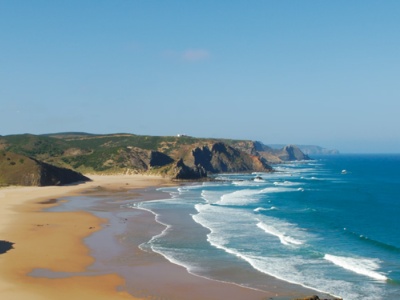 The Pontal da Carrapateira (Carrapateira Promontory), located in the Vicentina coastline, in the Algarvean district of Aljezur, includes a coastal belt of great ecological importance and rare natural beauty which extends from the beaches of the Bordeira to the North, and Amado in the South. Containing high and indented cliffs jutting into the sea, the Pontal da Carrapateira is inserted in the Natural Park of the Sudoeste Alentejano (Southeastern Alentejo).
The Pontal da Carrapateira (Carrapateira Promontory), located in the Vicentina coastline, in the Algarvean district of Aljezur, includes a coastal belt of great ecological importance and rare natural beauty which extends from the beaches of the Bordeira to the North, and Amado in the South. Containing high and indented cliffs jutting into the sea, the Pontal da Carrapateira is inserted in the Natural Park of the Sudoeste Alentejano (Southeastern Alentejo).
Portinho da Arrábida – Lisbon and Valley of the Tagus *Awarded*
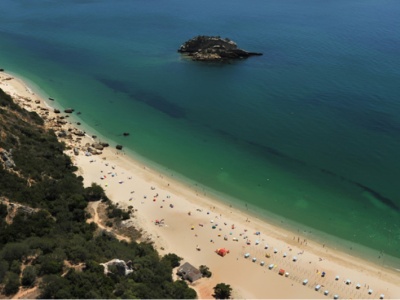 Portinho da Arrábida (Arrábida harbor) is deemed one of the most charming beaches on the Portuguese coast. This calm bay, with white sands and various tones of blue of clear waters contrast with the deep greens of the hills of Arrábida, thus creating a beautiful scenario perfect for contemplative relaxation.
Portinho da Arrábida (Arrábida harbor) is deemed one of the most charming beaches on the Portuguese coast. This calm bay, with white sands and various tones of blue of clear waters contrast with the deep greens of the hills of Arrábida, thus creating a beautiful scenario perfect for contemplative relaxation.
This calm bay is good for diving to appreciate the varied marine life taking into account that fishing itself is forbidden given that the seabed itself is contained within the Natural Park’s protected area.
Praia do Porto Santo – Island of Porto Santo / Madeira
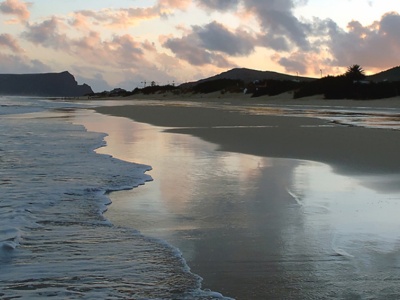 The Beach of Porto Santo is bathed with a calm sea and crystal clear waters, extending itself along the whole south coast in nearly 9 km (5.5 mi). Besides offering tranquility to the swimmers and beachgoers, the golden and sandy beach is famous for the therapeutic quality of its sands, due to the chemical and thermal properties, today a fact scientifically proven.
The Beach of Porto Santo is bathed with a calm sea and crystal clear waters, extending itself along the whole south coast in nearly 9 km (5.5 mi). Besides offering tranquility to the swimmers and beachgoers, the golden and sandy beach is famous for the therapeutic quality of its sands, due to the chemical and thermal properties, today a fact scientifically proven.
Maritime areas
Arquipélago das Berlengas – Central Region
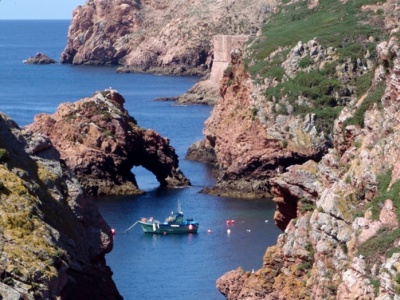 The Archipelago of the Berlengas is a group of very small islands located about 10 km (6 mi.) from Cape Carvoeiro, off the coast of Peniche. The island is a plateau surrounded by small beaches and high cliffs. The total Berlenga Nature Reserve covers an area of 1.000 hectares ( 2,500 acres) of ocean, to a depth of 30 meters (100 feet).
The Archipelago of the Berlengas is a group of very small islands located about 10 km (6 mi.) from Cape Carvoeiro, off the coast of Peniche. The island is a plateau surrounded by small beaches and high cliffs. The total Berlenga Nature Reserve covers an area of 1.000 hectares ( 2,500 acres) of ocean, to a depth of 30 meters (100 feet).
Ponta de Sagres – Algarve
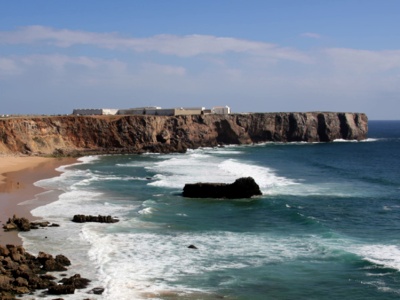 The Ponta de Sagres, located in the Vicentina Natural Park near the most westerly point of mainland Europe, is an imposing headland where you can contemplate magnificent views of the bay, cliffs and wild seascapes, fine beaches and caves.
The Ponta de Sagres, located in the Vicentina Natural Park near the most westerly point of mainland Europe, is an imposing headland where you can contemplate magnificent views of the bay, cliffs and wild seascapes, fine beaches and caves.
Ria Formosa – Algarve *Awarded*
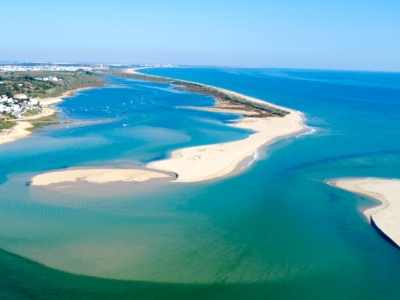 Ria Formosa is a protected Natural Park in the Algarve. With its physical diversity, it attracts a variety of life forms in an area that covers approximately 20.000 hectares (50,000 acres) and 60 kilometers (38 mi.) of coast, between the Manta Rota beach in the East and Ancão beach to the West.
Ria Formosa is a protected Natural Park in the Algarve. With its physical diversity, it attracts a variety of life forms in an area that covers approximately 20.000 hectares (50,000 acres) and 60 kilometers (38 mi.) of coast, between the Manta Rota beach in the East and Ancão beach to the West.
Inland Aquatic zones
Lagoa das Sete Cidades – Island of São Miguel / Azores *Awarded*
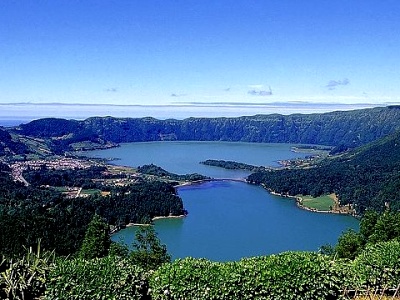 Located in the Northwestern part of the Island of São Miguel, in the district of Ponta Delgada, the volcanic complex, which includes the twin lakes of Sete Cidades (Seven Cities) is one of the most characteristic images of the Azores Islands and one of the most valuable tourist resources of the Autonomous Region of the Azores.
Located in the Northwestern part of the Island of São Miguel, in the district of Ponta Delgada, the volcanic complex, which includes the twin lakes of Sete Cidades (Seven Cities) is one of the most characteristic images of the Azores Islands and one of the most valuable tourist resources of the Autonomous Region of the Azores.
Portas de Ródão – Central Region
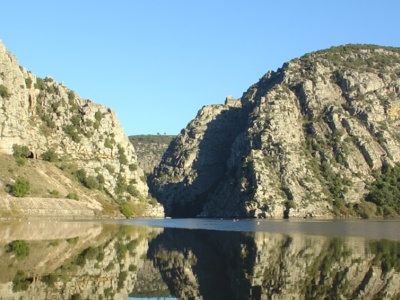 The Portas de Rodão (Doors of Ródão) constitutes the local attraction of the Old Town of Ródão and Nisa, where the Tagus runs entrenched between the cliffs that make the Tagus river narrower, reminding the thresholds of a huge gate.
The Portas de Rodão (Doors of Ródão) constitutes the local attraction of the Old Town of Ródão and Nisa, where the Tagus runs entrenched between the cliffs that make the Tagus river narrower, reminding the thresholds of a huge gate.
Vale do Douro – North
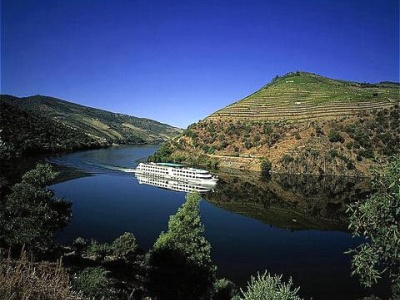 The Vale do Douro (Douro valley ) is remarkably beautiful with the hills falling steeply down to the water´s edge and becoming less and less populated and wild the further inland one travels, with more of the land giving place to terraces of vines and, to a lesser extent, olive groves, and notably by the end of winter, the blossom of almond trees, creating blankets of pink-white everywhere.
The Vale do Douro (Douro valley ) is remarkably beautiful with the hills falling steeply down to the water´s edge and becoming less and less populated and wild the further inland one travels, with more of the land giving place to terraces of vines and, to a lesser extent, olive groves, and notably by the end of winter, the blossom of almond trees, creating blankets of pink-white everywhere.
Protected areas
Parque Nacional da Peneda-Gerês – North *Awarded*
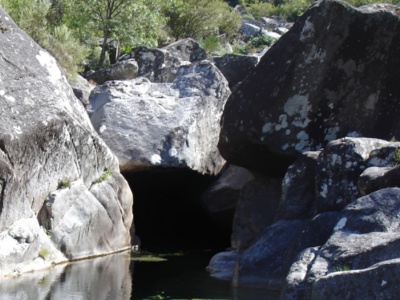 The National Park of the Peneda-Gerês comprises 72.000 hectares (178.000 acres) of protected area and includes five districts of the north of Portugal.
The National Park of the Peneda-Gerês comprises 72.000 hectares (178.000 acres) of protected area and includes five districts of the north of Portugal.
Having once been the home of the brown bear and the mountain goat (which are now extinct), Peneda-Geres still has today a varied fauna and is one of the last refuges of the great predators, such as the wolf and the royal eagle.
Parque Natural do Sudoeste Alentejano e Costa Vicentina – Alentejo / Algarve
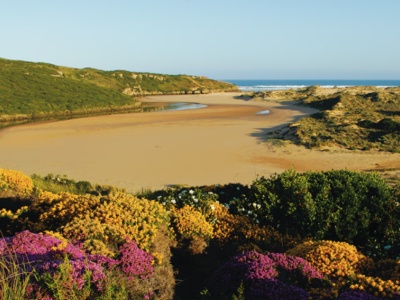 The Natural Park of the South-Western Alentejo and Vicentina Coast, covers an area of around 130.000 hectares over four municipalities: Sines, Odemira, Aljezur and Vila do Bispo. It is said to be Europe’s finest preserved stretch of coastline with a unique natural beauty.
The Natural Park of the South-Western Alentejo and Vicentina Coast, covers an area of around 130.000 hectares over four municipalities: Sines, Odemira, Aljezur and Vila do Bispo. It is said to be Europe’s finest preserved stretch of coastline with a unique natural beauty.
Reserva Natural da Lagoa de Fogo – Ilha São Miguel/Açores
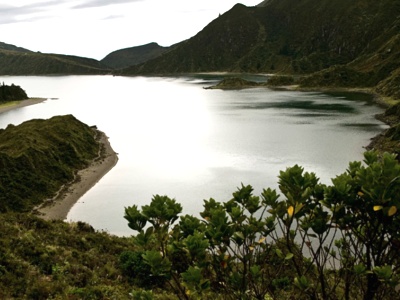 Lagoa do Fogo (“Lake of fire”) is a lake in the crater of an extinct volcano in the São Miguel Island, in the Archipelago of the Azores. With white sand beaches and clear water, the Lagoa do Fogo lake, which is also a natural reserve, contrasts with the breathtaking mountain range in its surrounding area.
Lagoa do Fogo (“Lake of fire”) is a lake in the crater of an extinct volcano in the São Miguel Island, in the Archipelago of the Azores. With white sand beaches and clear water, the Lagoa do Fogo lake, which is also a natural reserve, contrasts with the breathtaking mountain range in its surrounding area.
These 21 finalists all have their charm and value, but only seven of them will be chosen, and announced on September 11, 2010 in the Azores. What are your preferred?
Image Credits (the file names identify their source): 7maravilhas.sapo.pt, golisbon.com

{ 2 trackbacks }